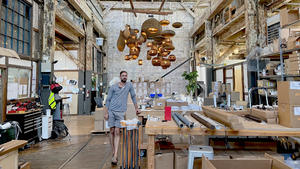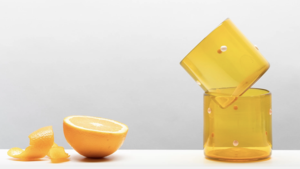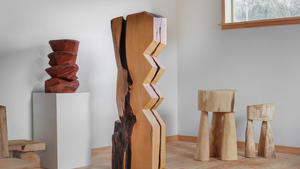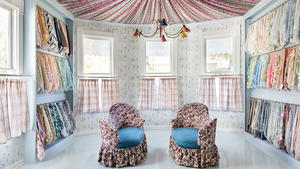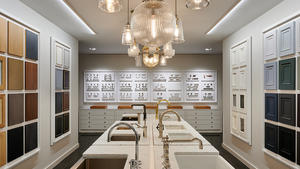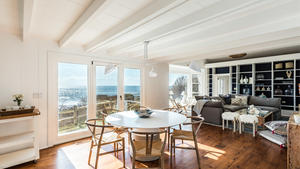The 50 States Project is a yearlong series of candid conversations with interior designers we admire, state by state. Today, we catch up with Jeremy Bauer and Jason Clifton, Midwesterners who met in Juneau, Alaska, and launched their firm, Bauer/Clifton Interiors, in 2006. (Clifton also recently became the new president of the Interior Design Society.) They discuss how far design in Alaska has come, the story behind their new floral studio, and why doing business way up north takes commitment.
I’m catching you in a spare moment at Dallas Market. What are you up to, and what are two Alaska-based designers doing in Texas?
Jason Clifton: We’re here visiting a few of our trusted vendors, I’m on a panel tomorrow about millennials in design, and we’re attending the ARTS Awards tomorrow evening. Dallas is a new market for us—we always tended to go to High Point Market and Las Vegas Market, but since we launched our sister company, Frenchie’s Floral Studio, back in 2017, we’ve found that Dallas offers the best of both worlds between our design studio and our floral studio. We’re able to discover new gift items here to offer at the flower shop.
One of the exciting things about this new column is we get to explore regional quirks of the design scene. I’m really excited to talk to the two of you, because I feel like you’re going to have a unique set of challenges. Can you tell me a little bit about being based in Alaska?
Clifton: When we first joined forces [and launched our firm] back in 2006, we were essentially introducing a new industry to the space of Alaska, or at least in our region, which is Juneau, the state capital. Back then, the only options available were what local lumberyards offered—option A, B or C. Our initial challenge was bringing in our preferred lines and luxury brands into such a remote area, forging those relationships and creating that niche market.
Jeremy Bauer: There was a stigma in Alaska that design didn’t matter, largely based on how utilitarian the living in Alaska can be with the elements, the extreme temperatures and so forth. It was really all about function versus form, so combining those—getting through to people that it mattered in the first place—was a hurdle early on.
Are you both from Alaska? How did you end up there, if not?
Bauer: I am from Kansas.
Clifton: And I’m from Indiana. So we’re both Midwestern—agricultural farm guys, transplants into this amazing world that has mountains, oceans, sea life, and wildlife galore.
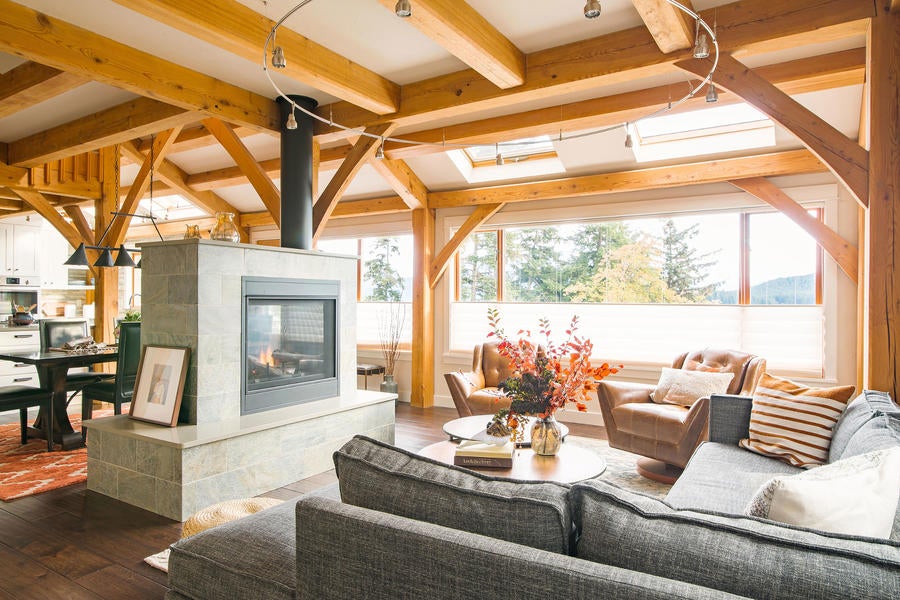
So how did you meet and come to launch a firm together in Alaska?
Clifton: My first introduction to Alaska was via a family cruise one summer. I was kind of in the middle of a quarter-life crisis, I was ready for a major change, I was ready to go outside of the Midwest. And Alaska just stuck with me for some reason. So I moved up there six months later. I figured if it didn’t work, I would just continue to make my way down the West Coast. But I’ve been up there 15 years now.
Bauer: I was going to college at Kansas State University, and a good friend was telling me about how she would come up to Alaska and work in the summers, and would make enough money in the summer to pay for college. My second year in college, she says, “I’m going back up, do you want to go?” And so I did. I came up here and worked in a jewelry store. I graduated with an engineering degree and an architecture degree, but then I chose to go back and work in the high-end jewelry store—I took over managing it and redesigned that space. It was the first design project I ever did. I did that for 10 years, until I opened my own jewelry store for about two years, but didn’t like it; I sold it, retired for one day, and then one of my friends said, “You always wanted to have a design firm, let’s open a design firm.” So the next day we opened a design firm. Later on that afternoon, just a coincidence, one of my jewelry store clients called and said, “You know something about design, right?” I went, “Yeah.” He says, “Well I want to redo my cabin, would you help me do that?” It went from a tiny remodel to a 5,000-square-foot addition to a remote cabin in Alaska. And ever since, it’s just been project after project, basically all based on word of mouth.
Clifton: It was about six months after I had moved up there that a mutual friend discovered we shared the same interest and background, so we were introduced. And then our business was launched soon afterwards.
You said an early challenge was overcoming an ambivalence about design in Alaska. Have you seen that change in recent years?
Clifton: I think we’ve single-handedly made a huge change in the philosophy around design across the whole town. When I first moved [to Juneau], there wasn’t a store or a home that had any sense of design. You’d walk into a box with fluorescent lights, and that was it. We’ve now done just about every restaurant and bar in town, which has been a great calling card for us—making people realize, “Wow, I actually care about the space I’m in.” We’re seeing that trickle down into commercial spaces, office spaces and definitely to the residential areas.
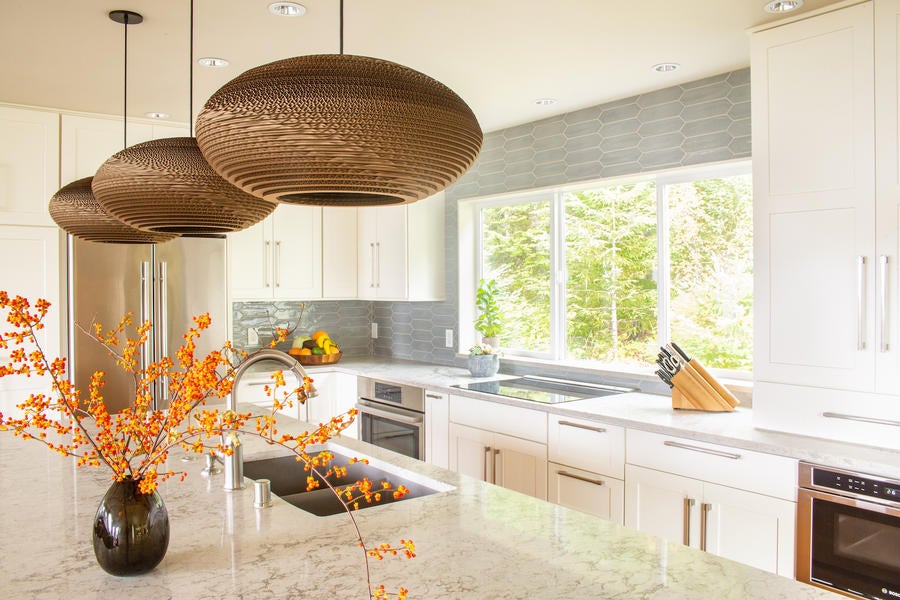
Where do you shop? And what are the challenges you encounter with freight?
Bauer: When we decided to open in 2006, you couldn’t get anything anywhere except a lumberyard. So we said, let’s start bringing these lines into Juneau. Well, Juneau is a town of 30,000 people and we were a budding company with very little under our belt at that point, so our biggest challenge was approaching these companies that had minimums, that needed to have display areas, and convince them that Juneau was a relevant market, if they would just give us a chance.
A lot of them say that you need 10,000 square feet with 50 items on the floor. But we have approached it as more of a boutique style. For our appliance lines, for example—a lot of major appliance lines want one of every model shown. For the Thermador line alone, there are 50 different models and $100,000 worth of investment. We’ve managed to do this with many different lines—to use the homes that we design as showrooms. As we finish a home, we talk to the clients and say, “Can we bring people in and show different pieces and parts?” The [homeowners] turn into our biggest brand representatives, giving new clients firsthand knowledge and reviews. We have essentially created our own boutique style of shop and design studio in Juneau.
Everything [we specify] is basically special-ordered. So much of what we do is already customized anyway, so doing it this way helps keep our overhead down—and then those savings are passed on to our clients because we’re not managing a 5,000- to 10,000-square-foot showroom.
Do you have a footprint, though, where you are carrying some lines that clients can come and see?
Bauer: Yes, absolutely. In our studio, our preferred cabinetry line is all of the millwork, with a wide variety of different countertops so clients can see the differences between natural stone, quartz or wood.
Clifton: We have incorporated so many of our design details into our office, very precisely, so that we can show not only the product, but also how the product is used and installed just by walking through the studio. But every piece is functional.
Bauer: That’s beneficial for our more regional clients in southeast Alaska. But we also work throughout the entire state—and in the last couple of years, throughout the Lower 48, as well. With those, there is a bit more online shopping, depending on what’s available in those regions. With the remote lodges and homes up in northern Alaska that we work on, there’s really nothing around. That’s where we’re schlepping samples back and forth or sending the client packages. We’ve mastered the art of logistics and working with them from afar.
One of our biggest challenges is freight. That accounts for anywhere between 13 to 20 percent of the overall budget—the additional freight of getting product up to Alaska. Which is a sizable amount.
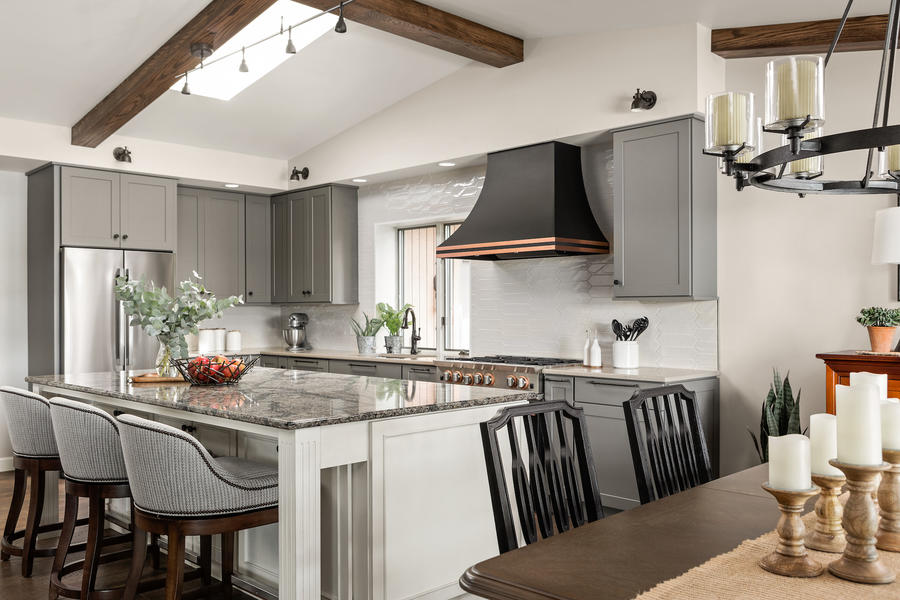
How does it actually arrive?
Clifton: Dog sled, of course.
I knew I was going to feel silly asking!
Bauer: Most of our larger items we ship through our freight porters in Seattle. Then they’re placed on a barge and floated up to Alaska, which is where those additional costs come in. But at any time of year, the seas could be incredibly rough, and it’s passed through so many hands at that point that we could have an amazing custom piece that we’ve been waiting on for six months—and we unwrap it and it’s completely demolished or crushed.
That’s awful.
Bauer: We’ve had some nightmare stories where that’s happened—and there’s really nothing else. Fortunately our clients understand because that’s just the reality of living here.
Clifton: And while that 13 to 20 percent cost for shipping might be a real surprise for someone living in the Lower 48, we’re all used to it. That doesn’t surprise anybody living in town. That’s just part of living there. We’ve all grown accustomed to it.
What does your team look like?
Clifton: Our current team is Jeremy and me, and then we have three additional full-time employees and one part-time employee—that’s a full-time interior designer, interior architect and studio coordinator, and then the part-time position is bookkeeping.
Bauer: And a part-time draftsman.
And how many projects are you working on at any given time?
Clifton: Typically 15 to 20. They vary in size, and we like to make sure they’re not all approaching the same phase at the same time, because sometimes that can be a nightmare of logistics alone.
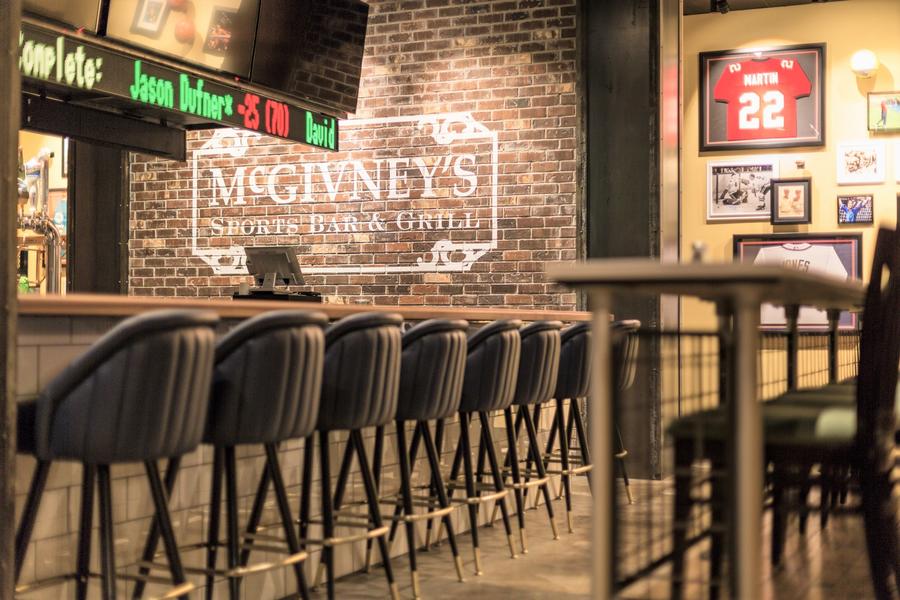
What is the biggest challenge you encounter in your work, or in your firm, right now?
Clifton: Honestly, I think our biggest challenge is finding staff. We could grow our business a little bit more, but we need to find people who want to dedicate their lives to living in Alaska. It takes a very special person to really fall in love with that area of the world, and who maintains a similar aesthetic and attention to detail. Because being a small firm and juggling so many projects, we really rely upon our team to wear multiple hats—just as many as we do, for the most part. We’re always looking for those number-one hustlers to join. We’ve had amazing candidates, but if they’re not as motivated, we’ve found it’s just not the best fit.
Where are you looking for new hires—is it people who have gone to school in the continental U.S. and want to move, or people in Alaska who are ready to join the team?
Clifton: Whenever we post a position, I open it up nationally. Our team is currently comprised entirely of transplants, with the exception of our part-time bookkeeper. What’s unique is that they get an entirely different experience and lifestyle relocating to Alaska. What we’ve found, though, is that we have to find candidates that are ready to dedicate themselves for the long-term, not just for a six-month vacation. It’s expensive for everyone involved when those relationships don’t last.
I found a lot of firms that specialize in commercial work throughout Alaska while researching for this interview, but not so many residential designers. Do you see more opportunity in commercial or residential work?
Clifton: Yes, there are a lot of hospitals, nursing homes and elementary schools [being built]. But actually, I would say that commercial has slowed down a little bit because a lot of those projects were publicly funded. Alaska’s overall budget is in flux with the current administration, both on the state and national level. For our friends in commercially driven architecture firms, they’ve had to move things around to ride out this wave. But we haven’t experienced that on the residential side just yet.
Bauer: You don’t see a lot of residential designers up there, because of some of the issues that we already talked about—trying to find staff, the logistics of getting product up there, product knowledge, training.
Clifton: Or even experienced designers from the Lower 48 who attempt to relocate, we’ve found that they’ve grown so used to just being able to jump in the car and drive to a local showroom or design center, and have the world as their oyster. We just don’t have that luxury, unfortunately. We specify everything online from all of our trusted vendors.
Bauer: And something that sets us apart from Lower 48 designers—Jason touched on the fact that they have cabinet showrooms, tile showrooms, lighting showrooms. We don’t have any of that up here. We are the lighting showroom, the cabinet showroom.
I feel like you also must have a really different relationship with your client as a result. How do you navigate that?
Clifton: We have a really in-depth interview process from the very beginning, which covers not only the standard wants, needs and wishes, but also includes taking measurements of certain ergonomics. If we’re working with someone who’s particularly small, or on the taller side, all of those details matter to ensure that we are able to specify furnishings that are going to meet all of their expectations of comfort. It’s an additional layer.
Can you tell me a little bit about how you bill for services?
Bauer: We bill hourly. There might be some smaller consultations where we’ll just have a base fee, but we’ve found that 99 percent of our projects grow exponentially as soon as the design process—or even the construction process—has started. We’ve found it to be challenging to be able to specify a realistic fee from the start. One recent project that comes to mind was going to be finding new flooring for this 6,000-square-foot home, which evolved into a full renovation that lasted three and a half years.
Clifton: And the crazy thing was, the client had met with a contractor who showed them some cherry flooring from Home Depot. What we ended up doing was sourcing reclaimed chestnut from a building that was demolished in Virginia, which was shipped across the U.S., sanded and then finished in place to become a true, one-of-a-kind floor. Typically, our clients have never worked with designers before, so hitting them up front with a huge fee and then trying to communicate what that equates to, we’ve found to be very challenging.
Bauer: Especially in Juneau, where we were fighting the idea that design was even something that someone needed.
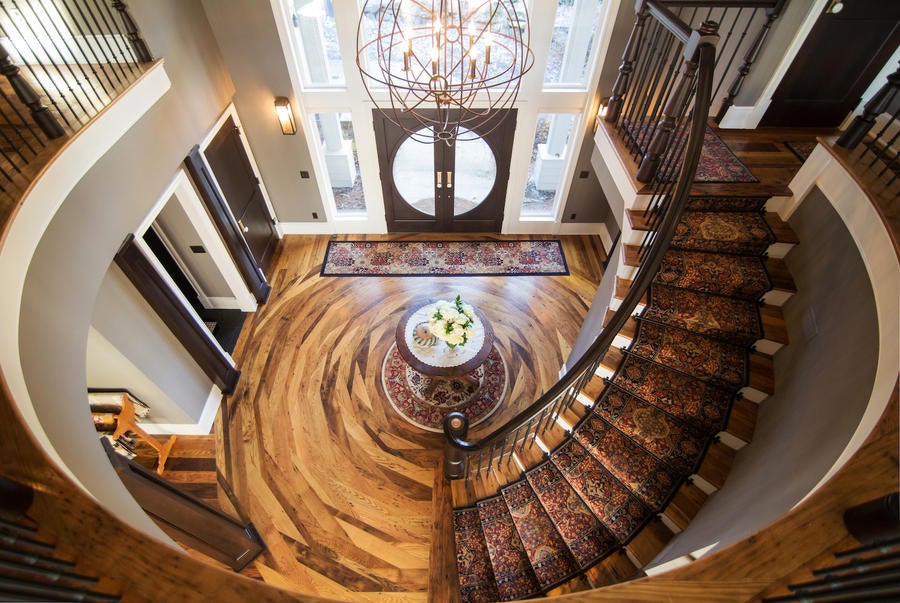
What keeps you inspired?
Clifton: We’re excited that color is back on the scene. We were never quite able to embrace the monochromatic white scheme, because half the year, when it’s snowy outside, it’s already white. People really want that warmth and infusion of color into their lives, so it’s great to see that we’re going to have some more options to pull from in that regard.
What is the design vernacular of Alaska? You said utilitarian, but what do people gravitate toward in your experience?
Bauer: I think we’ve done enough work in Juneau in the style you often find throughout Seattle and Portland that it’s now becoming a style of work we’re known for in town. People have seen it, so they come to us saying, “We saw this house, we really like that, what do you think about doing ...” It naturally evolved into people having that desire just because now they’ve witnessed it.
Clifton: Or we’ll be working with clients who just relocated to Alaska, so they’re faced with the challenges of incorporating their lifestyle of the Lower 48 into this odd box of a home that’s located in Alaska and devoid of any personality.
If you’ve designed most of downtown in a 30,000-person community, does that make the two of you near-celebrities in town?
Clifton: It’s a small enough community that, if you’re involved the way we are, you just naturally get to know everyone. But I would say the true celebrities are our two French bulldogs, Gracie and Georgie. They’re the namesake behind our floral studio, Frenchie's Floral Studio. And they’re the ones who actually are perhaps the local celebrities because everyone will recognize them. Like, “Oh, my gosh, those are the Frenchies from Instagram.” We recently had complete strangers bring them Christmas gifts.
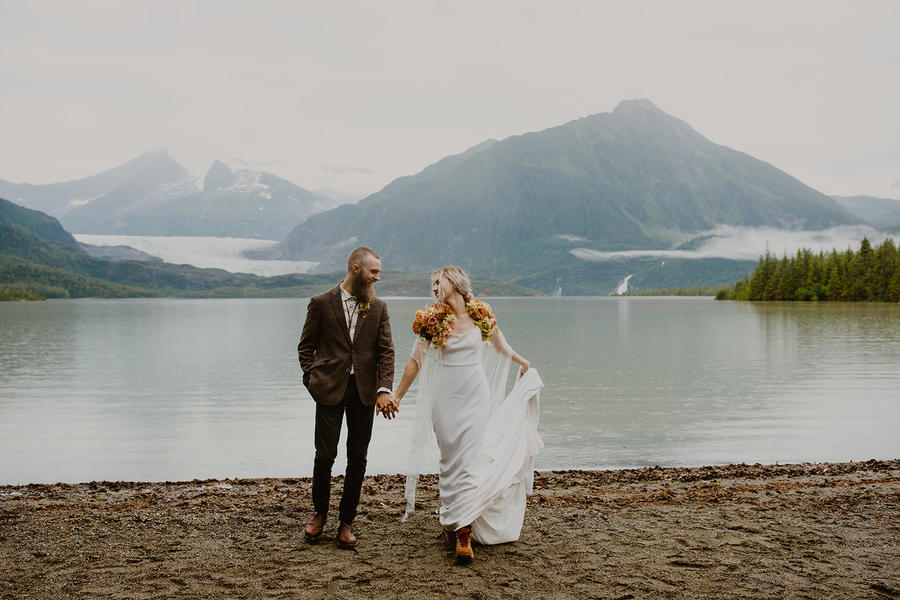
That’s amazing. And tell me a little bit about the floral studio. What made you want to move in that direction?
Clifton: We both felt strongly about incorporating botanicals and floral into our designs and day-to-day living. After 10 years of dealing with standard florist options or grocery store flowers that are over-dyed—and then seeing what’s truly available out there—the frustration level went through the roof. We decided to launch this small little flower shop with a farm-to-vase concept, so we source live botanicals from farms throughout Alaska during the summer months, as well as from the Pacific Northwest and into Northern California.
Bauer: We’re trying to focus on a small carbon footprint, no floral foam, and being smart and environmentally conscious in our flower choice.
Clifton: And featuring seasonal blooms. There aren’t going to be peonies or tulips available year-round.
Bauer: There’s an educational aspect to that, showing people that there’s something to look forward to in the spring when the tulips and daffodils are available.
Clifton: And from a business standpoint, that’s been a great experience. We’ve never had the bandwidth to step away from the design studio to manage and do everything ourselves, so it was a lesson in how to own a company versus owning and operating it. We have a team that varies from five to seven floral designers over at Frenchie’s, who are doing wonders. And our lead designer, Melissa [Garcia Johnson], is starting to make a name for herself in the wedding industry. Our original [idea for] a micro flower shop in a 250-square-foot studio has erupted into her completing wedding designs in Chicago, up north in Anchorage, and in Seattle—and doing some amazing, kick-ass designs.
Clifton: That’s probably been the largest blessing of that whole venture, seeing—no pun intended—every part of our team blossom.
Bauer: Everybody who came to work for us came with a sense of design, not as florists. Melissa was a fiber artist and used to weave, so when she first arrived, she had to figure out how to transfer her aesthetic into live materials. It’s been absolutely amazing to watch that transformation.
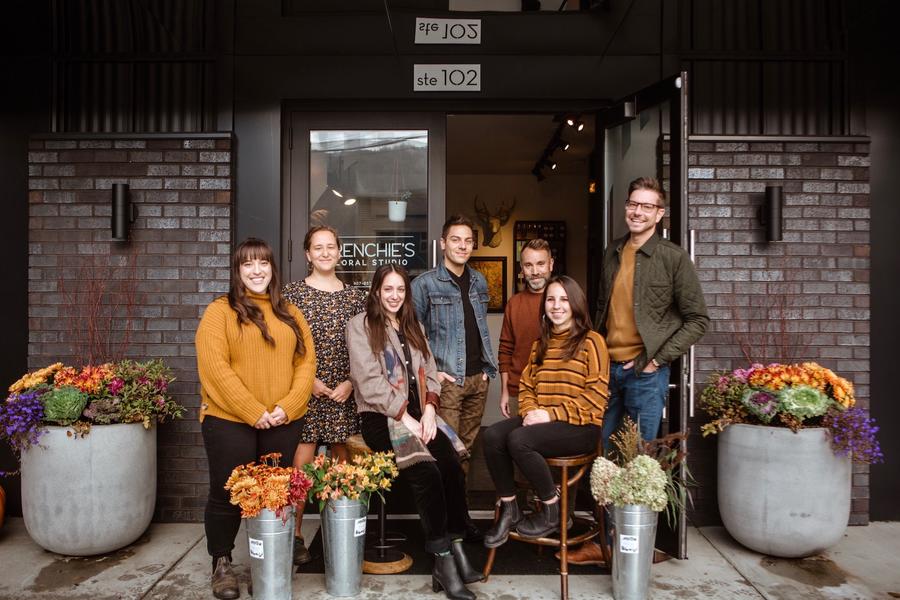
What’s the next frontier?
Clifton: We are always looking to expand our team so that we can take on new projects in a more expeditious manner.
Bauer: We have a building that we purchased to start an actual showroom—something a little different than the way our studio is set up. There are no price tags in our studio, which can make people a little intimidated to walk in. They think it must be expensive. What we’ve realized is, if we can set something up with listed prices per square foot and per item, people would probably feel much more comfortable coming in and shopping. So we have the space, we have the idea, we know the vendors we’d put in there. What we’re missing is the employees—an experienced workforce.
In addition, we’re looking to establish a second location in the Lower 48 this year, and we’re eager to establish licensing agreements for product design, and get our hands into that end of the spectrum too.
To learn more about Bauer/Clifton Interiors, visit their website or find them on Instagram.
Homepage image: Jeremy Bauer and Jason Clifton | Courtesy of Bauer/Clifton


















